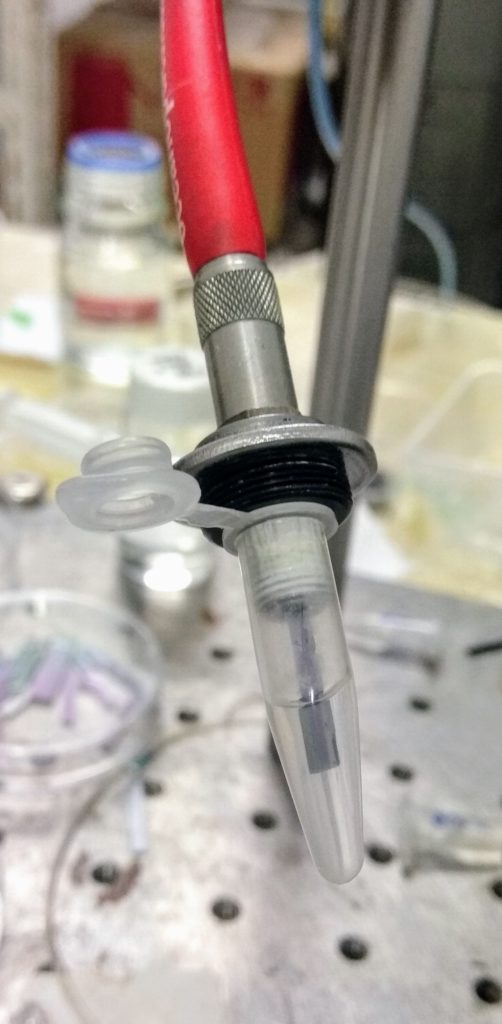Immersible microfluidics-free Silicon Optical Biosensors
Photonic label-free biosensors have exceled in biochemical detection, as they combine a wide dynamic range with immunity to electromagnetic parasitic effects, and have emerged as the most promising route towards Point-of-Care (PoC) and Point-of-Need (PoN) devices that may perform rapid, sensitive and accurate analyses at the point of interest. However, the evolvement of a Photonic Integrated Circuit (PIC) to a compact and easily-deployable system stumbles upon several unsolved technological challenges. These challenges have decelerated the evolvement of PICs -regardless of analytical performance- into complete, compact, robust, reliable and user-friendly systems.
For years, the trend in PIC-based sensors has been the attempt to integrate all components on a single chip either monolithically or through hybrid integration. The Optical Biosensors group –which has pioneered in the development of monolithically-integrated silicon optical biosensors and has created a unique chip integrating in just 37mm2 10 optical sources, 10 sensors, spectral analyzers and the respective photodetectors “https://pubs.acs.org/doi/abs/10.1021/acsphotonics.9b00235”- has devised over the past few years a radically different approach to circumvent these challenges. The approach –named the “Photostick”- was to strip everything from the PIC apart from the passive components creating a PIC with two interferometers and create a photonic-based sensor capable to be operated in a dip-stick format by immersing it directly into microwells containing the sample for analysis. To achieve this, the silicon chip is elongated and incorporates geometrical single sided elements, broad-band Mach-Zehnder Interferometry (a principle of operation created by the Group, too, about 15 years ago), biofunctionalization, and self-aligned interfacing with external photonic components. The sensor is thus totally alleviated of microfluidic compartments and electrical interfacing and can be used in a way analogous to immunochromatographic strips. The Photostick chips have been put to the test for the semi-quantitative determination of antibodies against the Receptor Binding Domain (RBD) of SARS-CoV-2 Spike 1 protein in human sera and have already demonstrated the ability determine antibody levels in the serum of vaccinated individuals in about 20 min (submitted manuscript).

Currently, the group is working on the performance optimization of the Photostick through a microectronics process that is compatible with most silicon MEMs foundries to ensure a safe commercialization route in the bio-diagnostics industry. Such optimization includes maximum coupling efficiency between compact and low-cost broad band light sources and single mode waveguides, proper selection of the exposed arm geometry to maximize sensitivity and a surface activation process that stabilizes the immobilized biomolecular probes extending the shelf life of the probes. In addition, the Group is currently evaluating the Photostick probes as a new tool for the determination of harmful substances and adulteration in raw milk while it is testing the Hypothesis of whether they can be applicable to the determination of the nutrient content of hydroponically cultured microgreens.
Most recently, the Optical Biosensors group has initiated theoretical designs of a variation of the immersible photonic probes that will accommodate broad-band Young interferometers instead of Mach-Zehnder interferometers. The incentive behind this exploration is that such a design may allow for further decrease of the size and cost of the recording system rendering it even more attractive for PoC/PoN applications.